All of Kyoto’s World Heritage Sites are unique and stunning in their own way, and the mountain complex of Fushimi Inari Shrine (AKA Fushimi Inari Taisha) is one of the most breathtaking. Thousands of vermillion coloured “torii” (a traditional Japanese gate found at shrines) line kilometers of mountain path, creating a surreal, almost tunnel-like walk to the many sub-shrines and mountain lookout.
Fushimi Inari is easy to access, only two stations from JR Kyoto station. Entry is free of charge and the shrine is open every day.
So let’s take a look around Fushimi Inari…
Photos of Fushimi Inari Shrine
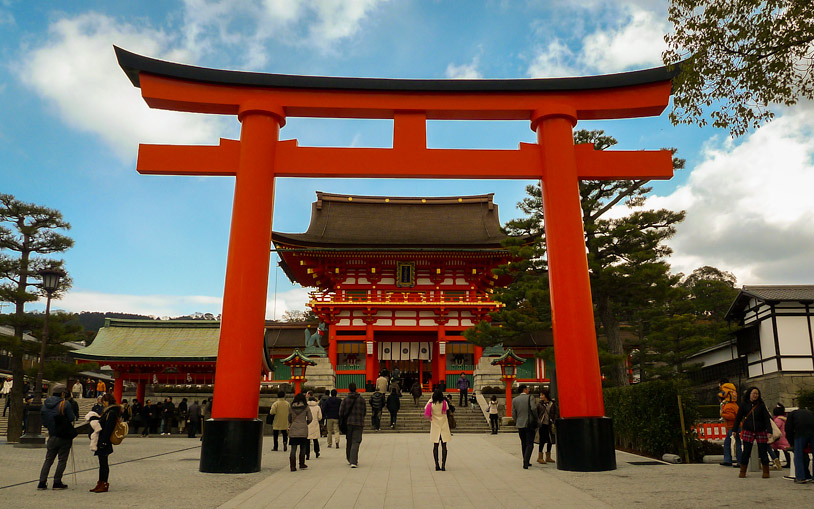
This amazing mountain shrine complex is characterised by the thousands of vermillion coloured gates that line the 4.2km main path.
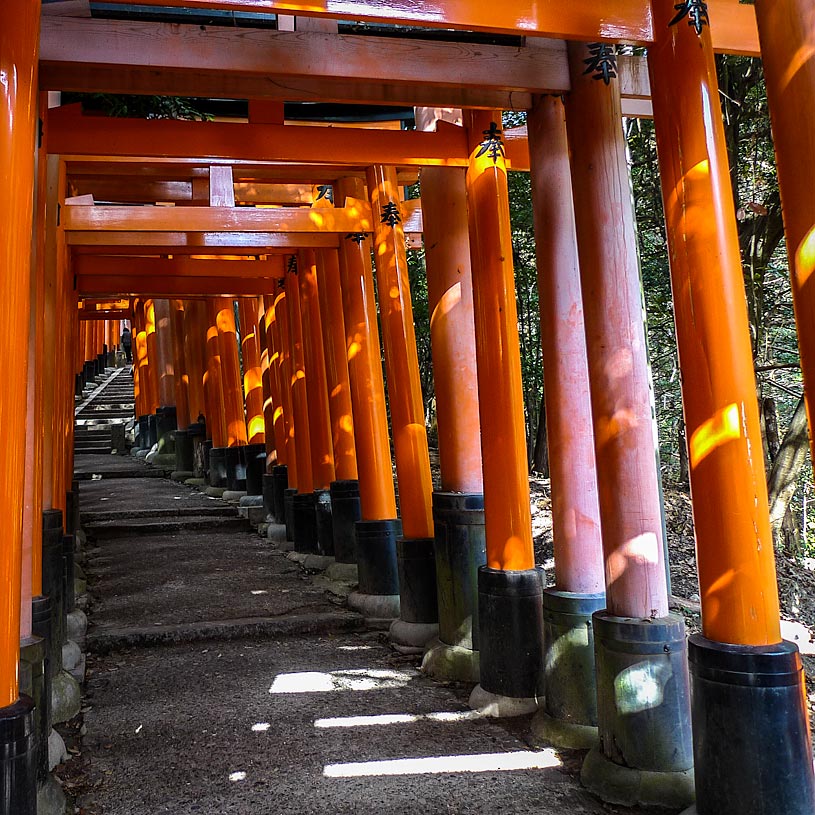
The main suggested path is about a 2 hour walk, starting at the bottom of the mountain at the main shrine complex. We spent over 3 hours, taking our time exploring the mountain and also the shrine complex at the main entrance.

Smaller sub-shrines are found along the mountain path – making for a good rest stop on your hike up the mountain.
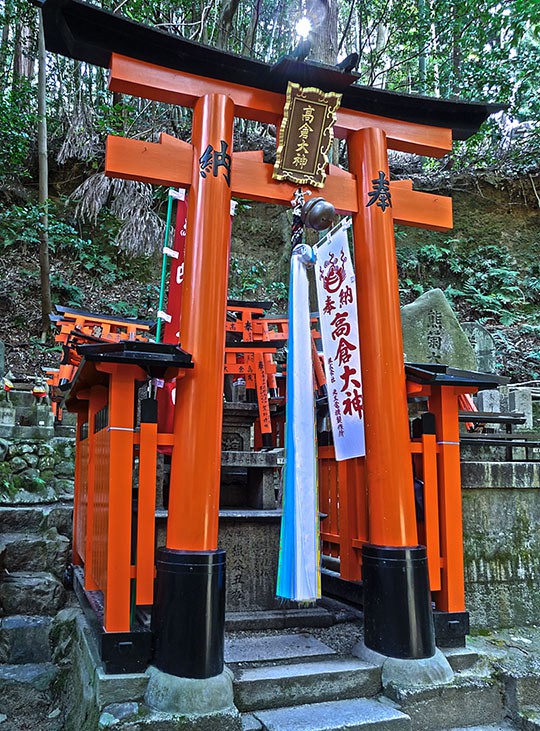
Fushimi Inari’s name comes from: Fushimi-ku, the name of the area where the shrine is located and; Inari, a Japanese deity. The Inari deity is most well know as the god of agriculture and business. As such, Fushimi Inari Shrine is frequented by businesses and businessmen praying for success. Over the new year period, millions of Japanese come to pray for happiness.
Statues of foxes are found all over the shrine. You’ll first come across them in pairs at the main gates of the shrine at the bottom of the mountain. One of the pair is holding a rice granary key in its mouth, and together the foxes stand guard and protect the shrine from evil and bad luck. Foxes have always been closely associated with the Inari god.
The Inari god and his foxes have a fascinating history, read more about the Shinto God of rice and his foxes at the Japanese Buddhist Statuary site.
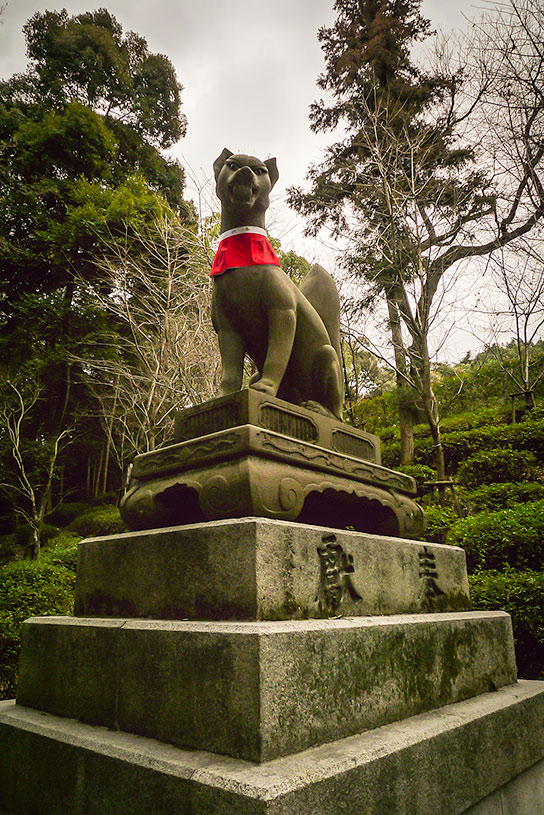
The torii are sponsored by companies or business people. The inscriptions on the gates themselves show the business name (on the left) and the date their sponsorship started (on the right). The largest gates cost 1.3million yen – about $15,000.
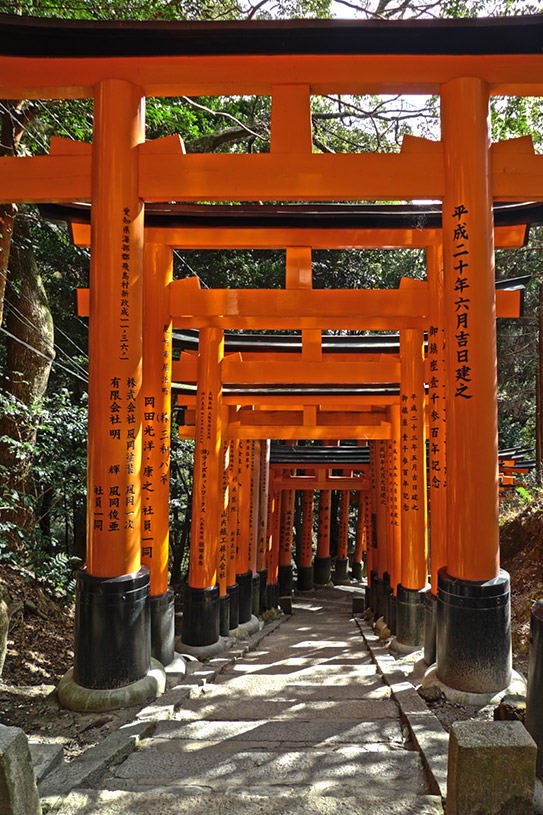
Individuals who wish to pray for happiness and success – but don’t have thousands of dollars to pay for a large gate to be installed on the mountain path – can buy a smaller ornamental sized gate, and have their name painted on it. They are then placed in the smaller sub-shrines and graves on the mountain.

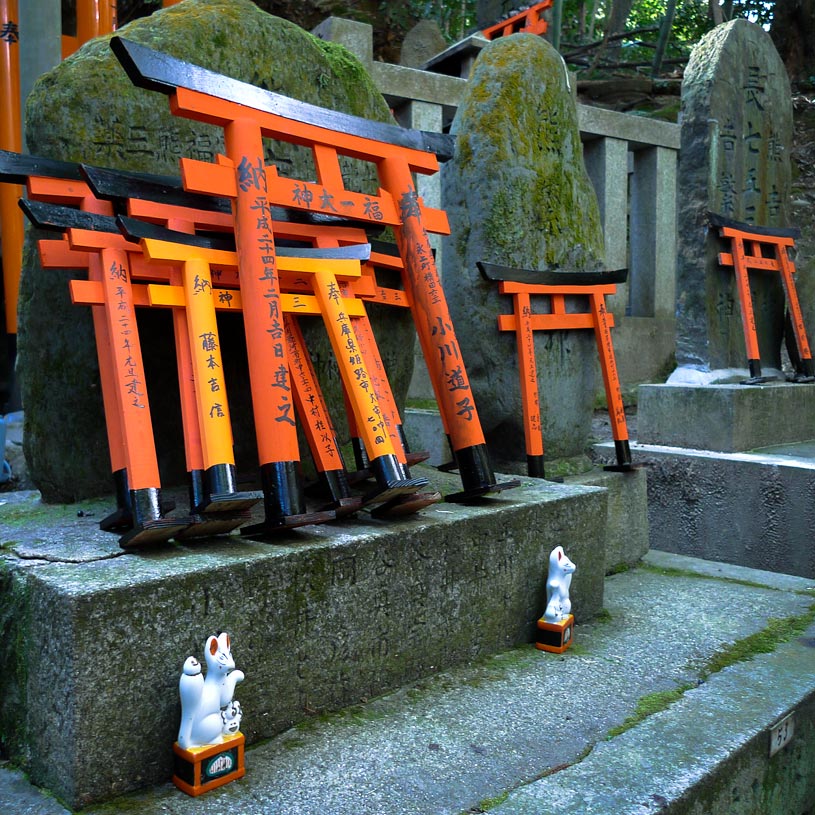

As well as the smaller shrines of Fushimi Inari, a handy rest point is found on your journey up the mountain. A lookout and rest area are located here, giving you a great view of Kyoto city.
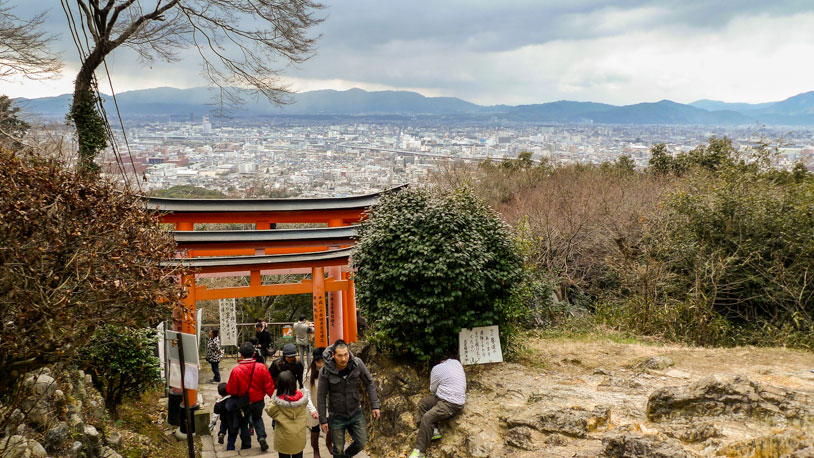
One thing you’ll notice about the torii is that some are very old and in poor condition. We happened upon this old man who was either performing some maintenance on one of the gates, or perhaps working on the installation of a new sponsored gate.
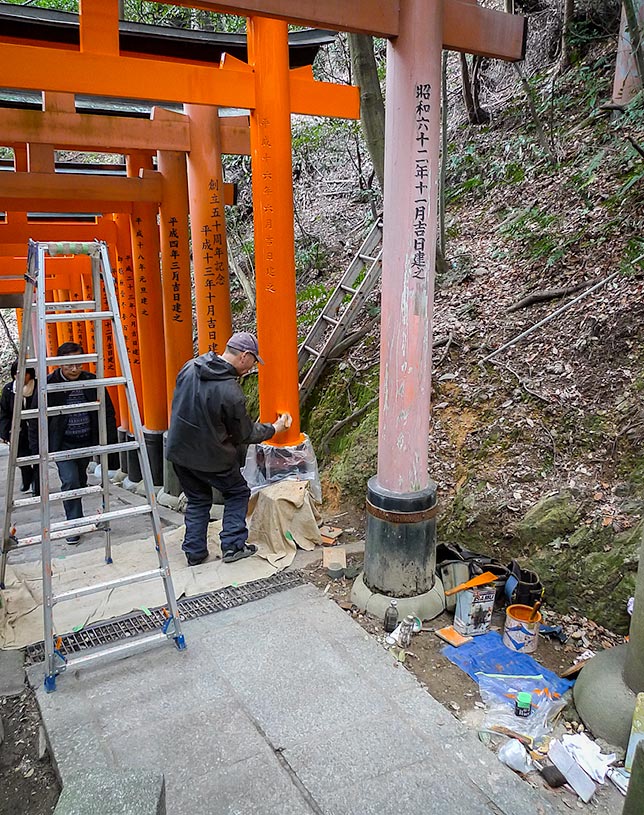
Maintenance must be a never ending job…
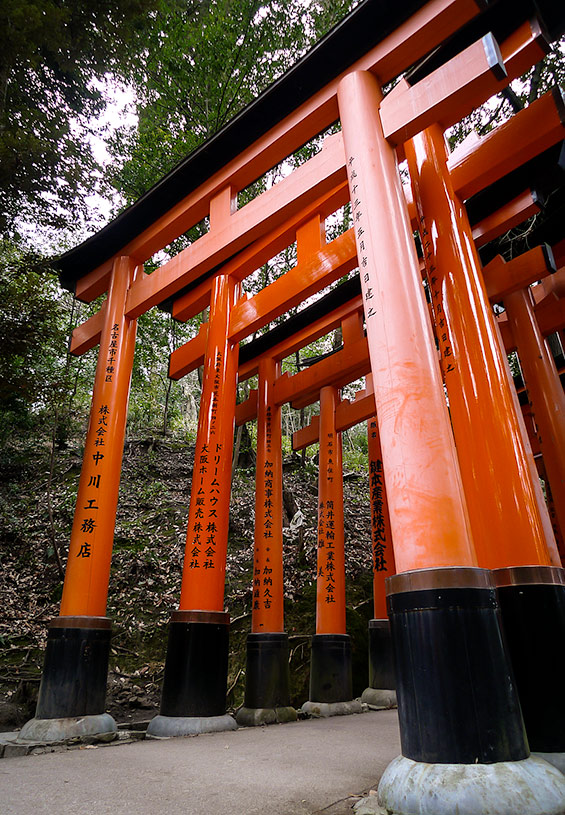
Located at the bottom of the mountain is the main shrine, across from Inari station. The photo below shows the lower shrine complex when coming down from the mountain.

The main shrine complex contains the large main tower gate, main shrine, halls and souvenir shops.

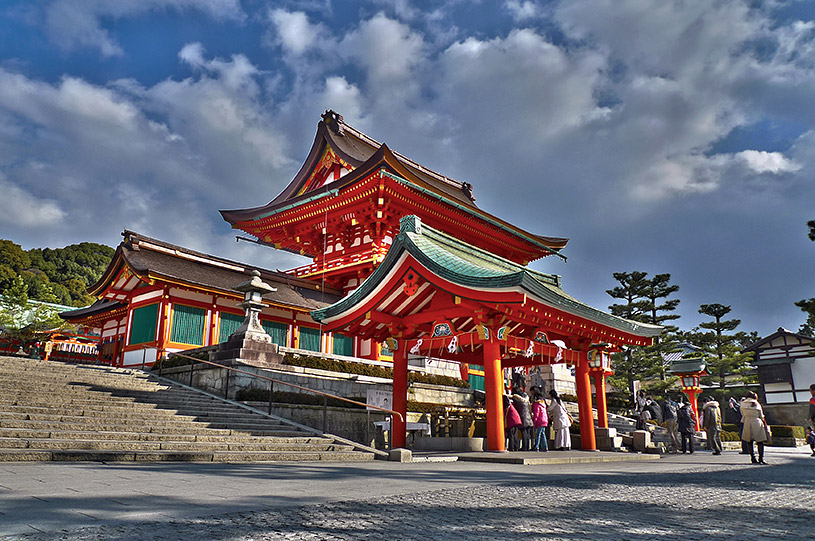
One of the best free things to do in Kyoto
The ancient, UNESCO World Heritage site of Fushimi Inari Taisha is a “must-do” for anyone visiting Kyoto.
Just be sure to wear some good walking shoes – there are plenty of places to buy food and drink along the track, so don’t worry about packing supplies for a hike. Signs say the track length is 4.2km (2.6miles) which reaches the top of the mountain where a shrine is located, but if you wanted to explore all the tracks, there could be about 10km of track to explore. If you’re feeling unfit, there are much shorter routes along the path – for example, you can get to the lookout in 30 minutes and then take an alternative route back down the mountain to the main complex.
How to get to Fushimi Inari Shrine
Loading map...

The easiest way to get to Fushimi Inari is by train – a bit unusual as most sites in Kyoto are accessed by bus.
From JR Kyoto train station, find the JR Nara Line Local service to Inari station. The ticket is 140 yen and it’s only a 5 minute train ride. You’ll go through only one station (Tofukuji) before arriving at Inari station.
The entrance to the shrine is literally directly across the road (to the east) from Inari station, you’ll see the familiar red torii guarded by a fox statue.
Entry is free and the shrine is always open, you can even visit at nigh-time and experience the eerily-lantern-lit paths of the mountain!
Where to stay
I’m not really the conventional traveller and don’t like to stay at hotels in Japan. But I’m a big fan of capsule hotels… You should try Kyoto’s modern designer capsule hotel 9hours near the Gion district, which is an amazing experience in itself!

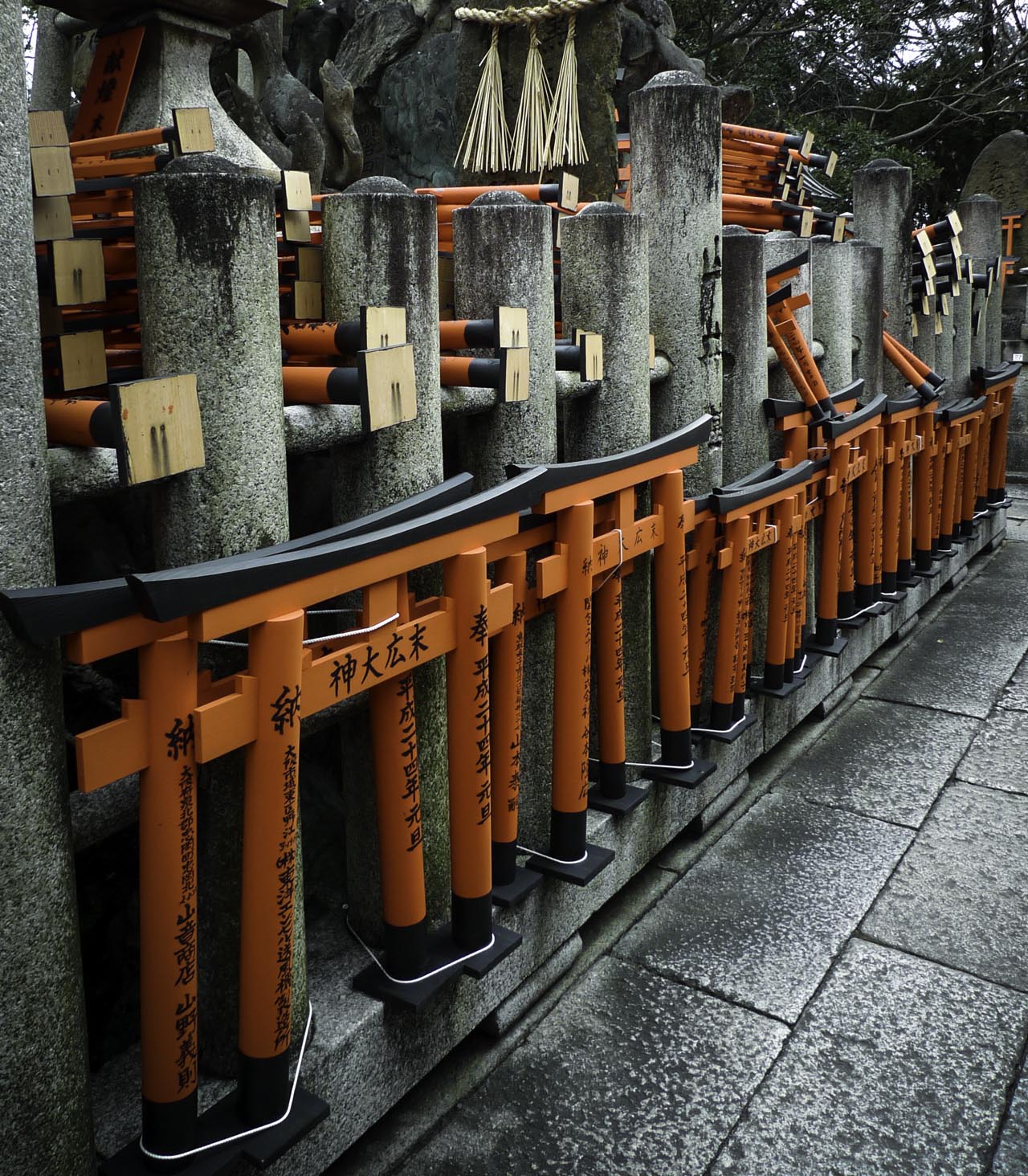
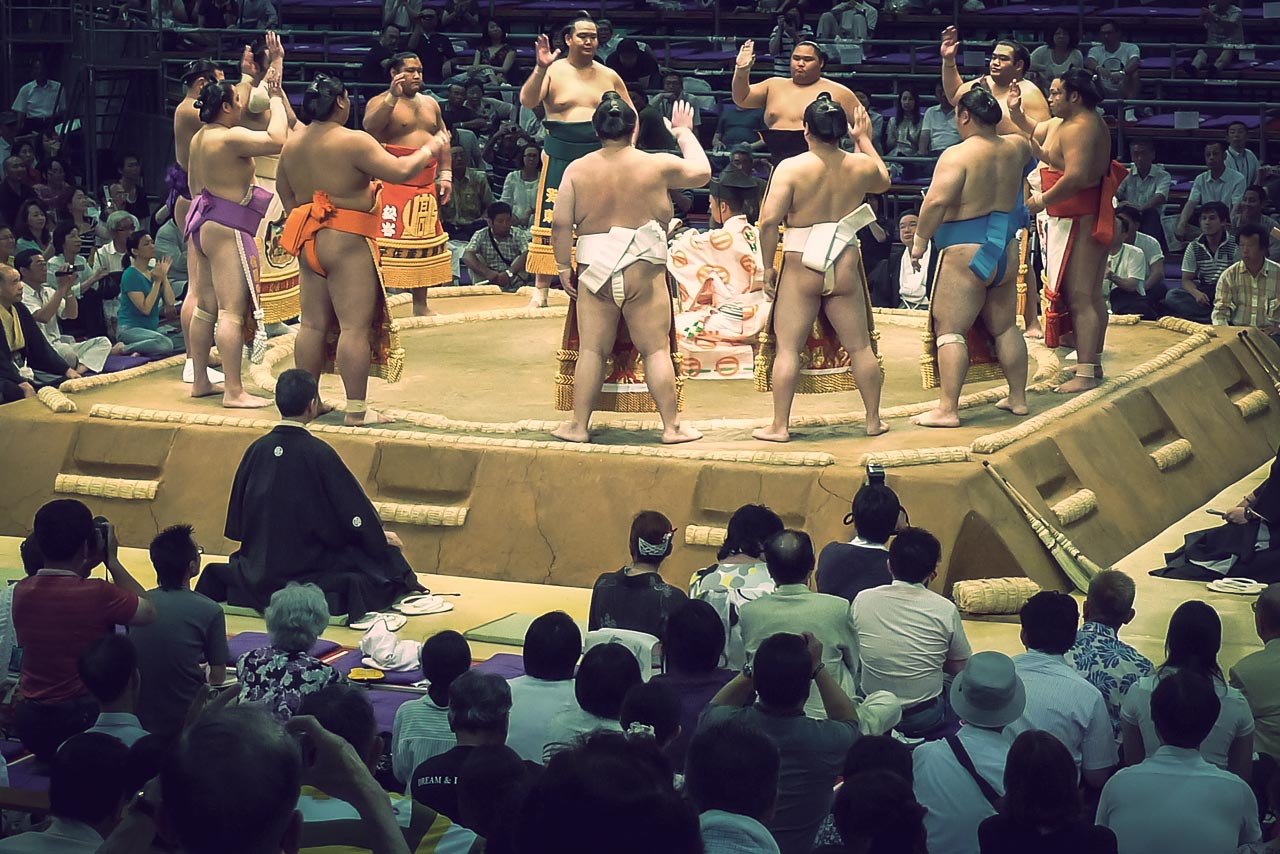
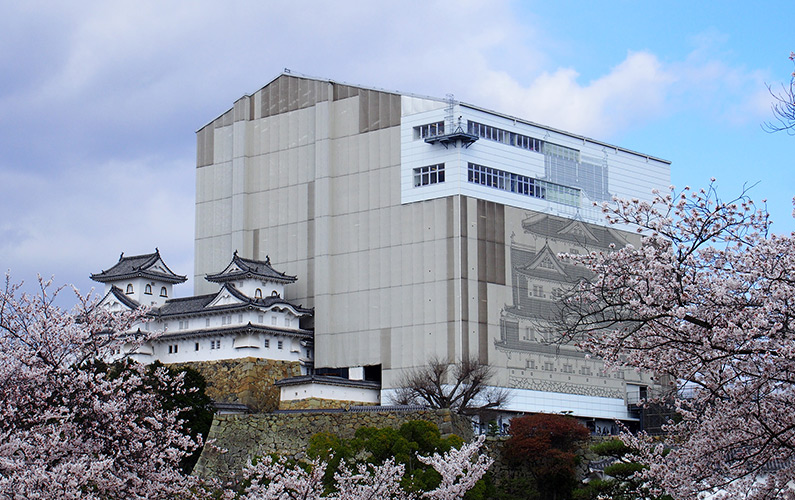
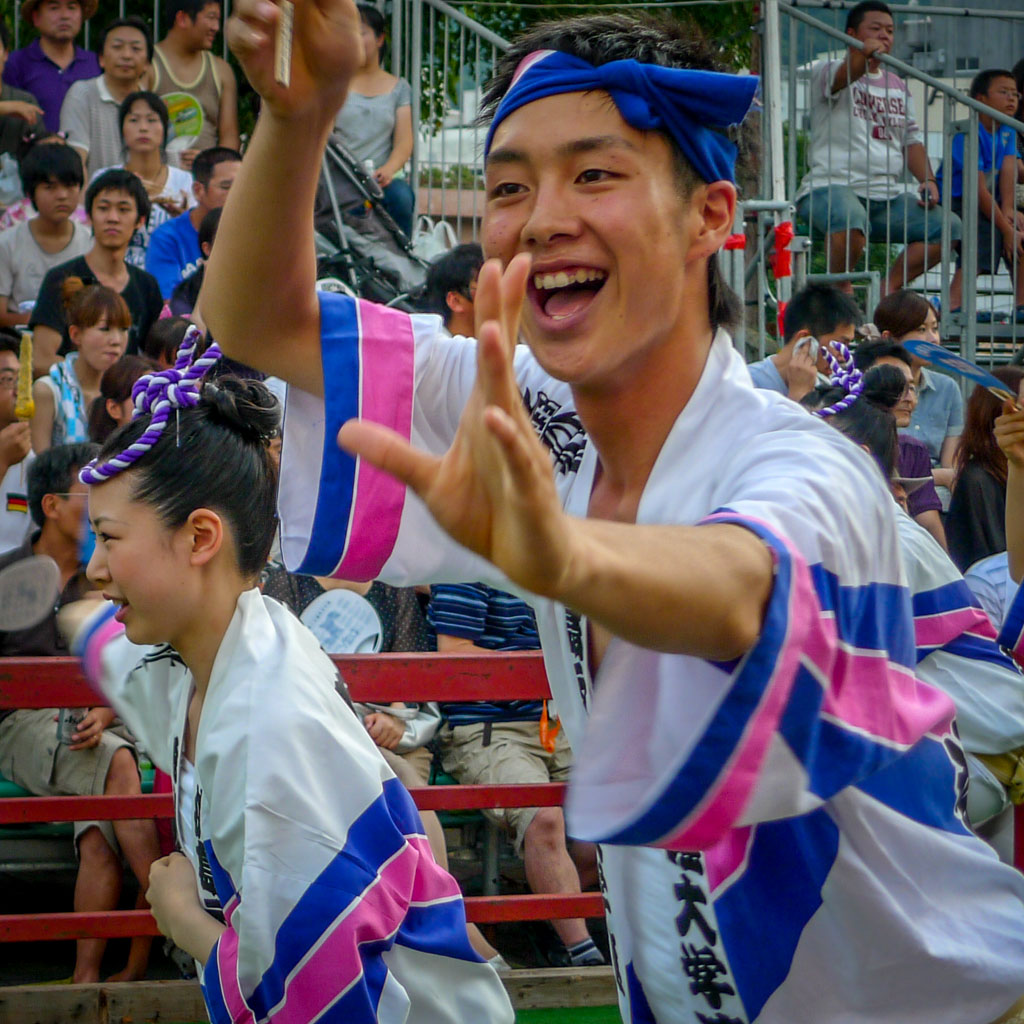
It is definitely a must see in Kyoto and an amazing experience. I recommend spending the time to fully appreciate all this place has to offer rather than a quick visit on the way to somewhere else. There are various trails up the mountain to smaller shrines.
We visited Fushimi Inari on a short trip to Japan from where we live and work in Korea. What a great place to see. I wish we would have had more time to explore the whole area and all of the trails, but as we were out to see temples in Kyoto (that’s a massive undertaking for a long weekend) we only made it up and down the main paths with the gates. Beautiful place.
I know what you mean Charlie… I spent half a day there and it didn’t feel like enough! I want to go back and visit it at night, when the paths are lined with traditional lanterns. Seen lots of photos of this and it looks spectacular!